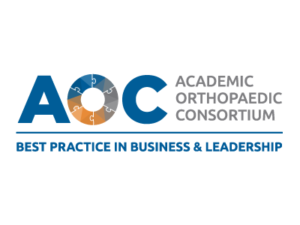Why Your Most Profitable Service Lines Are Probably Undermarketed
Healthcare marketing budgets tend to follow a simple logic: promote what’s busy. The highest-volume service lines get the biggest marketing investments. Primary care, urgent care, and high-frequency specialties dominate campaign planning because they generate the most patient encounters.
But patient volume and organizational profitability are not the same thing. While marketing teams optimize for appointment numbers and patient acquisition costs, finance teams are looking at contribution margins, payer mix, and net revenue per case. These two perspectives rarely align, which creates a problem that most healthcare organizations don’t even realize they have.
 The most profitable service lines are often undermarketed, while lower-margin services consume disproportionate marketing resources. This misalignment doesn’t happen because of poor planning. It happens because marketing decisions are made using the wrong success metrics.
The most profitable service lines are often undermarketed, while lower-margin services consume disproportionate marketing resources. This misalignment doesn’t happen because of poor planning. It happens because marketing decisions are made using the wrong success metrics.
The Volume Bias in Healthcare Marketing
Healthcare marketing budget allocation usually starts with historical performance. Services that already generate high patient volumes receive continued investment to maintain that volume. New campaigns get evaluated based on cost per lead and appointment conversion rates, metrics that favor high-frequency, lower-complexity services.
This approach makes intuitive sense. Why wouldn’t you invest in services that already demonstrate patient demand? The problem is that demand and profitability operate on different scales.
Consider orthopedic surgery and primary care. Orthopedic surgeons generate an average of $2.7 million in annual revenue for their affiliated hospitals, making them among the highest revenue-producing specialists. But primary care generates far more patient encounters. In most healthcare systems, marketing budgets reflect the encounter volume rather than the revenue potential.
The same pattern appears across service lines. Cardiovascular surgery, interventional cardiology, and neurosurgery consistently rank among the most profitable specialties, yet they often receive marketing budgets proportional to their patient volume rather than their financial contribution to the organization.
 Why Profitability Gets Overlooked
Why Profitability Gets Overlooked
The disconnect between marketing investment and profitability happens for several practical reasons. Marketing teams typically don’t have direct access to service line financial data. They work with metrics like patient volume, referral rates, and acquisition costs because those numbers are readily available in marketing platforms and patient scheduling systems.
Financial data often lives in different systems, analyzed by different teams using different timeframes. By the time finance calculates service line contribution margins and payer mix impacts, marketing campaigns have already been planned and executed based on volume-driven metrics.
Even when marketing and finance teams try to collaborate, they often struggle to translate financial performance into actionable marketing strategies. Knowing that neurosurgery has a 35% contribution margin is useful information, but it doesn’t immediately tell you how to market neurosurgery services more effectively.
There’s also an organizational culture issue. Marketing teams get pressure to demonstrate activity and reach, which naturally favors high-volume services that generate lots of appointments and visible patient traffic. It’s easier to show marketing impact when you’re driving hundreds of primary care appointments than when you’re generating a handful of complex surgical cases.
The Real Cost of Misaligned Investment
When marketing budgets don’t reflect service line profitability, organizations face several compounding problems.
First, they miss growth opportunities in their highest-margin services. Hospital operating margins averaged around 5.2% in 2023, meaning most health systems are operating with very little cushion. In that environment, even modest volume growth in high-margin service lines can significantly improve overall financial performance. A few additional orthopedic cases per month might represent more profit than dozens of lower-margin encounters.
Second, they may be inadvertently attracting unprofitable patient populations. Marketing campaigns that optimize for volume without considering payer mix or case complexity can fill schedules with patients who generate negative margins, particularly in specialties where payer reimbursement varies dramatically by procedure type and insurance category.
Third, resource constraints become more acute. Most healthcare organizations operate with limited marketing budgets, particularly as margins remain under pressure despite recent improvements. When those limited resources go toward lower-margin services, high-value service lines don’t get the marketing support they need to reach their growth potential.
What Changes When You Market to Profitability
Organizations that align marketing investment with service line profitability see several shifts in how they approach growth strategy. They stop measuring marketing success primarily through appointment volume and start tracking metrics that connect to actual organizational financial performance.
This means looking at patient acquisition not just by cost but by expected patient lifetime value and payer mix. A cardiovascular patient with complex needs and commercial insurance represents fundamentally different value than a self-pay patient seeking routine services, even if the initial acquisition cost is identical.
It also means getting more sophisticated about which patient segments to target. This is where AI or ML solutions like predictive patient targeting become valuable. Instead of casting wide nets and hoping to catch the right patients, organizations can identify individuals most likely to need high-value services and reach them with relevant messaging before they’re actively searching for care.
The Implementation Challenge
Shifting marketing strategy toward profitability requires breaking down organizational silos that have existed for years. Marketing, finance, and clinical operations teams need shared frameworks for evaluating service line performance and making resource allocation decisions.
This typically starts with creating common metrics that both marketing and finance teams can use. Instead of marketing tracking only appointment volume while finance tracks contribution margins, both teams need visibility into patient lifetime value, payer mix by acquisition channel, and actual revenue generated by different patient populations.
Most importantly, organizational leadership needs to support this shift. When marketing teams are evaluated primarily on patient volume and acquisition efficiency, they’ll continue optimizing for those metrics regardless of profitability implications. Leadership must make it clear that marketing success should be measured by contribution to organizational financial performance, not just patient encounter numbers.
The Competitive Advantage of Getting This Right
Healthcare organizations that successfully align marketing investment with service line profitability become more resilient as market conditions change. When reimbursement rates shift or new competitors enter the market, they can quickly adjust their focus to protect margins rather than defending volume in services that no longer generate acceptable returns.
This isn’t about abandoning lower-margin services or stopping all volume-focused marketing. Primary care and other high-frequency servic

es remain essential for strategic reasons beyond immediate profitability. But when marketing resources are scarce and organizational margins are tight, the question becomes whether your marketing investments are creating the financial outcomes your organization actually needs.
For most healthcare marketing leaders, the honest answer is that they don’t know. Their reporting doesn’t connect marketing performance to service line profitability, so they can’t say with confidence whether their strategies are driving growth in the right areas. That uncertainty is expensive, and it’s fixable.
The organizations that solve this problem don’t necessarily have bigger marketing budgets or more sophisticated technology. They have better alignment between how they measure marketing success and what actually determines organizational financial performance. That alignment is becoming less optional as healthcare margins remain under pressure and competition for profitable patient populations intensifies.











